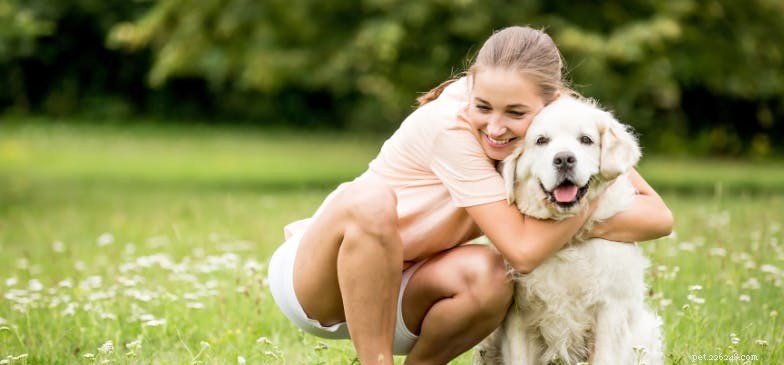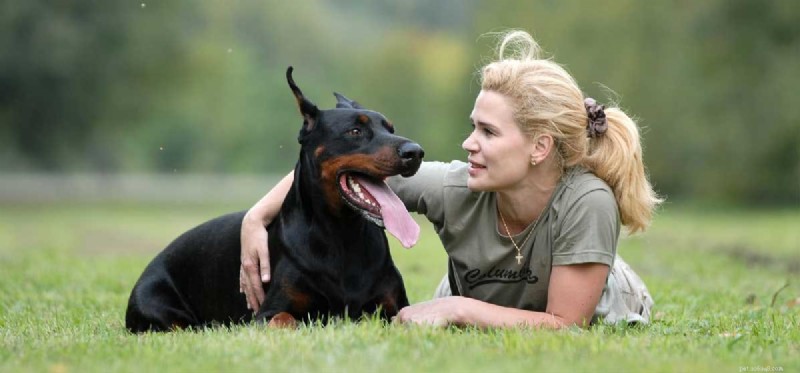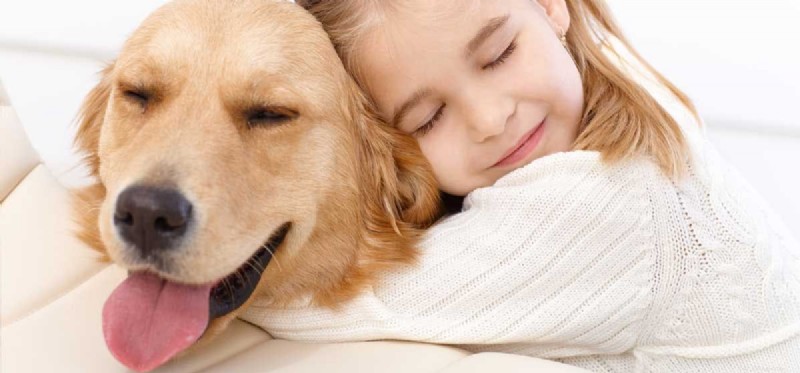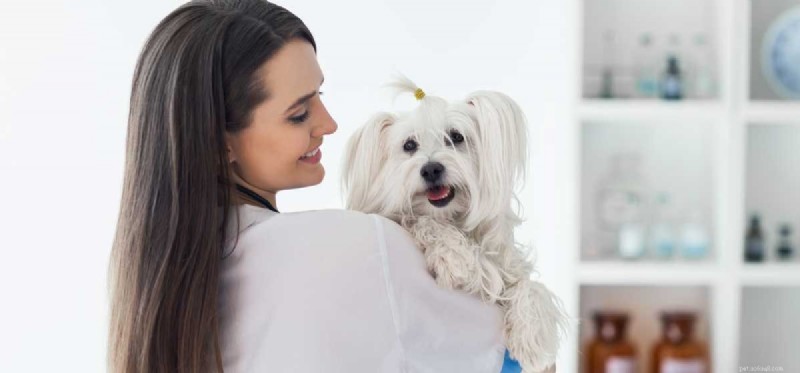Présentation
Quoi de mieux que de se blottir contre votre ami à quatre pattes et de l'entourer de vos bras pour lui montrer à quel point vous l'aimez ? En tant qu'êtres humains, nous échangeons souvent des câlins pour signifier notre amour et notre empathie les uns pour les autres. Ce geste est facilement reconnaissable comme affectueux, aimant et gentil.
Mais votre compagnon canin ressent-il la même chose à propos des câlins ? Ce comportement est-il bienvenu et apprécié, ou étranger et toléré ?
Dans le monde canin, vous ne verrez pas de chiens étreindre d'autres chiens. Contrairement aux humains, ce n'est pas une partie naturelle de leur comportement. Alors, votre toutou bien-aimé peut-il réellement comprendre les câlins et apprécier votre étreinte amoureuse ? Lisez la suite pour le savoir !

Comment savoir si votre chien comprend les câlins
La meilleure façon de savoir si votre chiot comprend l'affection que vous lui montrez est d'observer son langage corporel. Sont-ils tendus avec vos bras autour d'eux ou restent-ils détendus ? Si un chien est à l'aise avec un câlin, ses oreilles doivent rester en avant et sa queue haute.
Cependant, certains reportages ont suggéré que les chiens n'aiment pas être étreints et que les humains ont du mal à dire quand leur chien semble stressé ou anxieux. Cela dit, ce n'est pas vrai pour tous les chiens, et de nombreux chiens aiment se faire câliner par leurs parents.
Lorsqu'il reçoit un câlin, un chien anxieux qui ne reconnaît pas ce geste comme un signe d'affection peut :
- tourner la tête
- rompre le contact visuel
- exposer les bords blancs de leurs yeux
- coller leurs oreilles contre leur tête
- fermer partiellement les yeux
- léchez-vous la bouche et le visage
- grognement
- montrent leurs dents
Certes, les réactions peuvent varier d'un chien à l'autre. For example, puppies are much more tolerant of most forms of interaction, and Golden Retrievers are known for their fondness for any kind of physical contact. Still, hugging is a behavior not naturally exhibited by dogs and is typically not understood as a sign of affection.
A dog may hug may interpret a hug as a threat, as they may feel trapped and unable to flee from danger. This can cause confusion for your canine companion, who is unable to understand why their trusted human would exhibit a threatening gesture. When dogs are uncertain or confused in a social setting like this, they may exhibit canine displacement behaviors, like yawning and lip licking.
Don't fret, though — there are many other ways to show your best pal you care, like a good brushing, couch cuddling, a walk, or their favorite engaging activity. Many dogs will tolerate a hug despite the discomfort it causes them, especially when they love and trust you.
The history of dogs and hugs

The evolutionary history of canines versus primates (like humans) can help us understand why dogs don't quite understand receiving a hug.
Over time, humans and canines have co-evolved, resulting in a cooperative relationship between two species. However, you must consider the millions of years that dogs evolved independently from humans.
Hugging is hard-wired into our history as a species. From a young age, humans express affection, empathy, and love for others with this gesture. Research shows that even in our closest primate relatives, like chimpanzees, hugging is a way of expressing concern and providing comfort.
Dogs evolved to interpret the behavior of a leg over their shoulder or body as an assertion of dominance. When a dog puts one or both legs over the shoulders of another, called standing over, it's usually a display of social status and is perceived as controlling and assertive. Historically, this behavior was likely to occur when dogs were competing for resources.
This major difference in the evolutionary history of dogs and humans makes it easy to see why dogs may not interpret a hug as being affectionate.
The science behind dogs and hugs

Dogs are cursorial animals, meaning they are designed and adapted to run. In times of distress, their first instinct is to flee. When you hug your dog, they may feel trapped and like they can't escape. This can lead them to feel anxious and uncomfortable.
Though dogs don't hug each other, they do show affection in different ways. In nature, dogs have the tendency to lick other individuals they are attached to — this is called allogrooming. This gesture signifies social bonding and companionship. If your dog often licks you, this may explain why.
Dogs may also display their affection through playing, staying close to you, and following you around. These acts of affection are considered affiliative behaviors, or gestures between individuals sharing a social bond.
Though your dog may not understand a hug, they still love you and will show you in other ways!
Training your dog to tolerate hugs

Some dogs may be totally fine with receiving a hug! However, some may feel threatened, scared, or anxious, especially if the behavior comes from a stranger. With a little effort, you can train your dog to accept hugs.
This can be extremely beneficial in the context of going to the vet, when your dog may need to be held steady to receive vaccines, or interacting with children, who often don't know better than to lean on or throw their arms around the neck of a furry friend!
Positive reinforcement is the way to go when training your dog to accept hugs. You can do so by gradually linking hugs with something your dog loves, like treats or belly rubs. You should also know how to hug your dog the right way to ensure they feel comfortable and safe.
-
Start by simply resting your hand on their shoulder while you sit side by side and reward them with treats and praise, especially when they react calmly.
-
Gradually move your arm farther around your dog's shoulders, rewarding them with treats every step of the way.
-
If your pup pulls away or displays signs of discomfort at any time, don't force them to remain in contact. Just take a break and try again another time.
Keep at it, and over time, your woofer will start to associate an arm over their shoulder with something good.
If you'd like your pooch to be comfortable accepting hugs from others as well, it's important for you to have several people practice this training method. However, be sure they are people your dog is already comfortable with and go very slowly to ensure safety.
Training your canine compadre to accept hugs is possible and most effective when initiated at a young age. Be sure to be patient, too! After all, you're teaching your dog to accept something that goes against their social instincts!